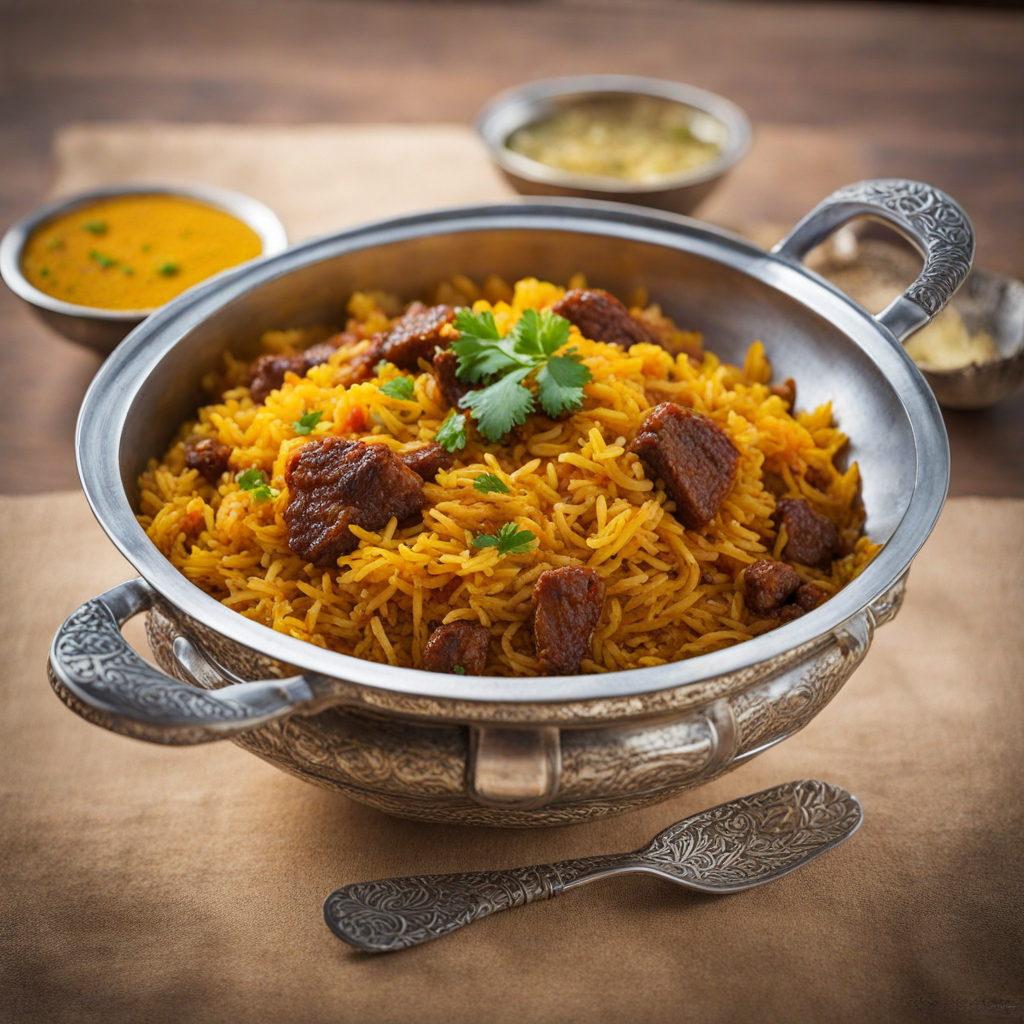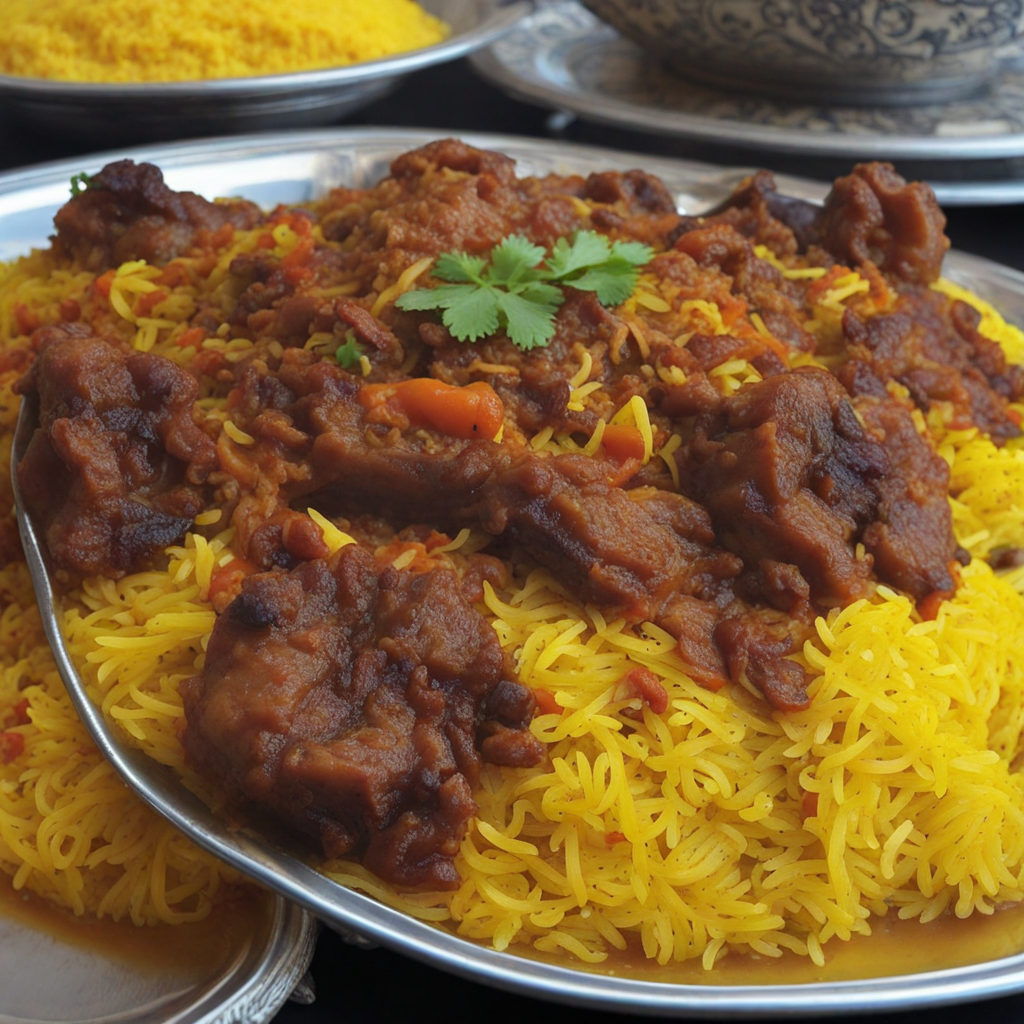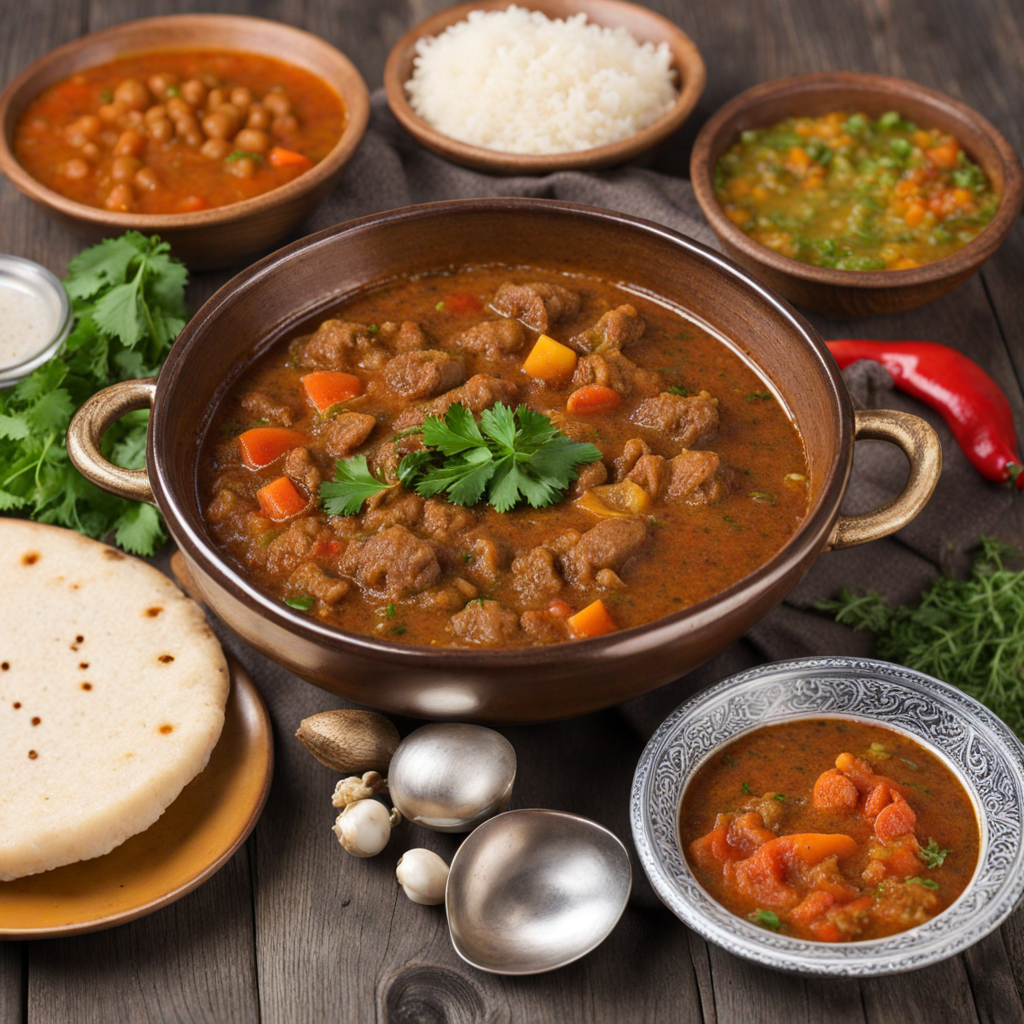Surbiyaan
Surbiyaan is a delightful Somali dish that embodies the rich flavors and culinary traditions of the Horn of Africa. This aromatic rice dish is often prepared with a medley of spices, including cardamom, cloves, and cinnamon, which infuse the grains with a warm, fragrant essence. The rice is typically cooked with tender pieces of meat, such as chicken or beef, and is often complemented by a mixture of vegetables, creating a colorful and hearty meal. The use of saffron or turmeric can also add a vibrant hue, making Surbiyaan not only tasty but visually appealing as well. One of the standout features of Surbiyaan is its unique cooking method, where the rice is layered with meat and spices, allowing all the flavors to meld beautifully during the cooking process. This layering technique ensures that every bite is filled with a burst of savory goodness. Additionally, it is common to serve Surbiyaan with a side of tangy yogurt or a fresh salad, which balances the richness of the dish and adds a refreshing touch. Surbiyaan is often enjoyed during special occasions and celebrations, making it a dish that brings people together. Whether served at a family gathering or a community feast, it embodies the spirit of Somali hospitality. The combination of spices, tender meat, and fragrant rice makes Surbiyaan a must-try for anyone looking to explore new culinary horizons and experience the vibrant flavors of Somali cuisine.
How It Became This Dish
The Culinary Journey of سربيان (Sarbiyan) in Somalia Sarbiyan, a fragrant and flavorful rice dish, is a cornerstone of Somali cuisine that reflects the country's rich cultural tapestry and culinary heritage. Often associated with celebrations and communal gatherings, it is a dish that embodies the essence of Somali hospitality and the significance of food in social bonding. The history of Sarbiyan is woven into the fabric of Somali culture, tracing its roots from ancient trade routes to modern-day kitchens. Origins The origins of Sarbiyan can be traced back to the historical interactions between the Somali people and various cultures from the Horn of Africa and beyond. Somalia's strategic location along the Indian Ocean has made it a melting pot of diverse influences, particularly from Arab, Persian, Indian, and later European traders. Rice, which is a staple in many parts of the world, was not originally a native crop in Somalia. However, it gained popularity during the medieval period, especially after the establishment of trade routes that facilitated the importation of rice from Asia and the Arabian Peninsula. The name "Sarbiyan" itself may have roots in the Arabic word "سيربان" (sirban), which refers to a type of rice dish. This linguistic link highlights the Arab influence on Somali cuisine, particularly during the time of the Sultanates, such as the Sultanate of Mogadishu, which played a pivotal role in trade and cultural exchanges. As rice became more accessible, the Somali people began to incorporate it into their traditional cooking methods, leading to the creation of Sarbiyan. Ingredients and Preparation Sarbiyan is primarily made with basmati rice, which is prized for its long grains and aromatic qualities. The rice is typically cooked with a medley of spices, including cardamom, cloves, cinnamon, and sometimes saffron, reflecting the influence of Arab cooking techniques. The dish is often accompanied by meat, usually chicken or lamb, which is seasoned and cooked with onions, tomatoes, and a blend of spices. The combination of fragrant rice and savory meat creates a delightful harmony of flavors that is hard to resist. Vegetables and nuts, such as raisins and almonds, are sometimes added to enhance the dish's texture and flavor, contributing to its festive nature. The preparation of Sarbiyan can vary widely among families and regions, with each cook adding their unique touch. This variability is a testament to the dish's adaptability and its ability to incorporate local ingredients and cooking styles. Cultural Significance Sarbiyan holds a special place in Somali culture. It is often prepared for significant occasions such as weddings, Eid celebrations, and communal feasts. The act of cooking and sharing Sarbiyan is a communal experience that fosters connection among family and friends. In Somali culture, food is not merely sustenance; it is a means of expressing love, respect, and hospitality. The preparation and sharing of Sarbiyan symbolize togetherness, making it a dish that transcends mere nutrition. In traditional Somali households, serving Sarbiyan is an act of honor. Guests are treated with utmost respect, and the sharing of this dish signifies the host's commitment to ensuring their comfort and satisfaction. It is common to see families gathered around a large platter, where Sarbiyan is served, allowing everyone to partake in the meal together. This communal dining experience strengthens bonds and creates lasting memories. Development Over Time As Somalia has evolved through the centuries, so too has the dish of Sarbiyan. The late 19th and early 20th centuries saw significant changes in Somalia due to colonialism and the imposition of new social dynamics. While traditional dishes like Sarbiyan remained popular, their preparation and presentation began to adapt to new influences. The introduction of canned goods, for instance, changed the way some ingredients were sourced and used in the dish. In contemporary Somalia, Sarbiyan continues to be a beloved dish, celebrated in both urban and rural settings. The globalization of food culture has led to new interpretations of traditional recipes, with chefs experimenting with flavors and presentation styles. However, the essence of Sarbiyan remains intact, serving as a bridge between generations and a reminder of the importance of heritage. Sarbiyan in the Diaspora The Somali diaspora has played a significant role in the preservation and evolution of Sarbiyan. As Somalis migrated to various parts of the world, they brought their culinary traditions with them. In cities like Minneapolis, London, and Toronto, Somali restaurants have emerged, serving Sarbiyan alongside other traditional dishes. These establishments not only cater to the tastes of the Somali community but also introduce the dish to a wider audience, contributing to the globalization of Somali cuisine. In the diaspora, Sarbiyan has also taken on new meanings. It serves as a connection to homeland and heritage for many Somalis living abroad. The preparation of Sarbiyan becomes a heartfelt reminder of family gatherings, celebrations, and cultural identity. Young generations, often born outside Somalia, learn the art of making Sarbiyan from their elders, ensuring that the traditions surrounding this dish continue to thrive. Conclusion Sarbiyan is more than just a dish; it is a symbol of Somali identity and cultural pride. Its rich history reflects the influences of trade, migration, and social change, while its preparation and consumption foster connections within families and communities. As food continues to evolve and adapt to modern contexts, Sarbiyan remains a cherished culinary tradition, embodying the resilience and vibrancy of Somali culture. Whether enjoyed in a bustling restaurant or at a family gathering, Sarbiyan stands as a testament to the power of food to unite, celebrate, and nourish the spirit. As Somalia continues to navigate the complexities of the modern world, Sarbiyan will undoubtedly remain a cherished dish, linking the past with the present and future.
You may like
Discover local flavors from Somalia







